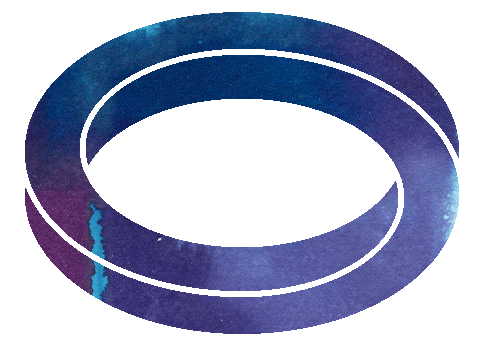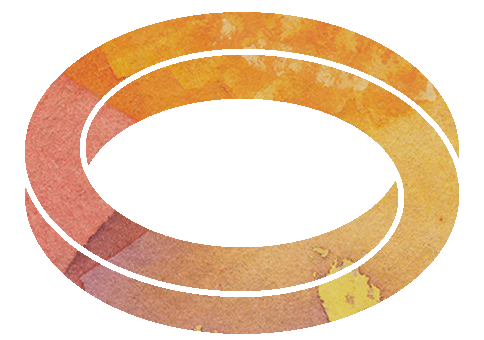One of the most confusing elements of biodynamic training is the emphasis on non-doing. Does this mean that our clients visit us in a professional setting, seek good care, pay us money…and yet we do not seek a favorable outcome to their clinical issue? Absolutely not! Let’s explore what it means not to have an intention.
For me, not having an intention means that my willful actions in the session are not directed toward securing a particular outcome. The technical word for this is afference. My activity in the session is afferent. That means that there is no impulse — no vector of energy — going from me to my client. I’m not sending energy, imposing a technique on my client, or manipulating structure to affect the body’s function. I’m not even evaluating.
That said, there are lots of things that I am doing to support my client’s desire to feel better. What am I doing?
- I set professionally appropriate, overarching clinical goals to which I aspire. (In my last post, I spoke about Ground, Expand, Allow as an example of my own such goals.)
- For each session, I ask the client to set a specific intention for the session, and I join them in that intention…even if the intention is beyond the scope of my professional practice. (This happens surprisingly often.)
- Then, I align with the intelligence that is already seeking balance, repair, and health in the system. I turn the intention over to that intelligence, which you could call Primary Respiration.
- Instead of looking for rational reasons to make a particular contact or execute a technique, I observe what’s happening and I follow what the body communicates to me in the moment.
- Even when I am aware of a distressed part, I hold awareness of that part without intervening.
I follow the sequence above, even when the system leads me to a place that seems to have nothing to do with the client’s named intention. I trust that I am being led to the system’s priority in the moment. And that is the most important thing.
Here is an example. A client experienced a blunt impact to the inferior and anterior aspect of her face, leading to chronic discomfort in the area of her right eye. (She has given me permission to share the session with you.) We set an intention of addressing the discomfort in her face. The body led me to a contact at the left side of the occipital ridge…which was not a place that was struck.
By the way, the Breath of Life uses the contact points that are meaningful to each practitioner, which could vary widely. For example, you might orient to bone, muscle, chakra, organ, or meridian. Or perhaps you orient to spirit, or to a psychological element like a defense structure or an IFS (Internal Family Systems) “part.”
At the session I was telling you about, where we had an intention of addressing my client’s right eye, a contact at the left side of the occiput generated a release that directly opened up the territory of her right eye. This was palpable to both of us in the moment. After the session, the client remarked on the structural shift that had occurred. She could feel it, and she could see it in the mirror. She noticed that her right cheek felt more spacious and her right eye felt more open. She felt more comfortable. And I could see that her eye and the right side of her face were visibly transformed.
In that session, the body was clear about going to the left side of the occiput. I didn’t go there, based on any rationale. And it is impossible to say in retrospect that the occipital release was necessary for my client’s eye to experience healing. Yet following the body’s cues to take up a fulcrum at the occiput was an effective strategy for relief in the eye.
What was the relationship of our intention to the outcome? To be honest, in Biodynamics we just don’t know. As in the example above, it is quite common that I am led to parts or places that seem utterly unrelated to the intention my client has set. Yet I continue to follow the wisdom of the body, because when I do, the outcomes are almost uniformly favorable.

To have an intention, we must formulate the intention. To formulate an intention, we have to carve the therapeutic experience into parts: Dysfunction versus health. My body apart from the client’s. Fault pattern in the sphenoid or inflammation in the SI joint.
This division of the system into parts seems antithetical to biodynamics. So how does this manner of practice lead to desirable conditions for my clients?
Here is my two-part working hypothesis, which simply expresses the foundations of our modality:
1. Primary Respiration solves problems without dividing the client into parts.
Even if you don’t set an intention, conducting a session is an invitation to optimize the system. That can lead to powerful consequences. A student I was mentoring once held my head for 10 minutes. Within half an hour, the dizziness from which I’d suffered for a few months dissipated entirely. I certainly had not formulated an intention to relieve the dizziness, nor had I even thought it possible. But when the system was optimized, the body was able to relieve itself of the burdensome symptom.
So, whether or not I am perceptually oriented to parts or symptoms in the moment, the intelligence at work in Biodynamics solves problems without dividing the client into parts. Intention or not, Biodynamics attends to the whole bodymind as one unit of function. And our most important skill as a practitioner is to perceive and engage this wholeness. In an interview available online called “Healing and the Natural World,” the late James Jealous speaks about our work as “holistic medicine”:
Holistic medicine means that the patient is indivisible. A person cannot be broken down. Holistic medicine means you have the ability to perceive the whole, and not partition it, which is a big responsibility.
So, setting an intention is not necessary. A biodynamic session actually follows the intention of a Greater Mind, rather than the intention of the client or the practitioner. But I find that setting an intention uncannily seems to crystallize the impact of a clinical session. Maybe the intention gives our linear human minds something specific to notice.
2. A visible segment is a segment in trouble.
Even though Biodynamics works with our wholeness, the nature of clinical work is that we work with parts that are not well integrated with the whole. In fact, an inertial fulcrum is an encapsulated pattern that by definition has been set apart from the whole.
The subhead above is another quote from Jim Jealous: “A visible segment is a segment in trouble.” If a part communicates to you, it is clinically relevant. That part is not participating in the cohesive whole (say, the fluid body at zone B). Thus, the boundary around the part is visible (zone A). That’s a segment in trouble.
In other words, the very appearance of a boundaried part indicates that the part longs to integrate with the whole. So, when your client names an intention, it’s likely that they’ve noticed that fragmentation. And when you contact a troubled segment, you support its process of integration with the whole.

In summary, I believe in knowing what’s important to my client. I join them in setting an overarching intention for each session. I also establish what’s clinically important for me as a practitioner — a kind of mission statement. But once I enter into a particular session, I step away from orienting to those high-level outcomes.
Instead, I simply support the activity of an intelligence that is beyond my mind, my goals, or the client’s desires. In my experience, there is often an uncanny alignment between the client’s intention, which is set before the session, and the outcome of a session, as conducted by Primary Respiration. This looks very different from a session where practitioner activity is based on analysis, technique, or protocol. And in my practice, I achieve better clinical results when I operate in this way.
Do you have any examples of this from your own practice, or any questions about the role of intention in your biodynamic practice? Please comment below, I’d love to hear from you.
2 Comments
Leave a Reply Cancel Reply

BE THE FIRST TO HEAR
ABOUT UPCOMING EVENTS
AND PUBLICATIONS.
Unsubscribing is always available with a single click.
Thank you so much for this elegant and clarifying explanation of what you mean by intention. I realize that even though I “intend” to allow primary respiration to direct the session there is still a part of me that wants to direct the process. What do you do when you notice this part if it arises in the middle of a session? I also notice there is also accompanying fear and anxiety and then I get anxious that I’m affecting my client with this energy. I think of the term emotional hijack.
Also, by having the client set an intention there is a wish for things to be different than what is so and a resistance to what is actually occurring. How do you hold this intention for things to be other than what is happening and not resist the resistance ?
You bring up so many thought-provoking points @Jenna! I’ll respond to a few and very much hope that other readers will weigh in too.
First of all, that part of you that still wants to direct the process…I assume that every human alive knows that part well. I would call it the ego or the impulse to manage, control, and do. And it makes total sense to me that that part would feel fear and anxiety about things not going its way. For example, the client may not get better, or may not click with the work, or with me.
What do I do when I notice that anxious, controlling, manager part in me? I don’t do anything special beyond cultivating my neutral. I wouldn’t underestimate the power of cultivating a neutral. Another thing that helps: Since the work we do is powerful, we can build up a library of memories that reminds us of all the many other times when we didn’t direct the process and it turned out well for the client. This is very reassuring. I call it my inner rolodex and I use it to calm my anxious part when it gets aroused. Come up with a single other time that worked for you, and call upon it like touching an amulet.
Regarding the wish for things to be different. I think you make a good point, but I do not agree that aspiring to something necessarily stirs up resistance. It’s important not to push against a symptom or a condition. Instead, we’re orienting to the wholeness and health that *includes* the unresolved or uncomfortable pattern. Even if we’re aware of a particular place that is buzzy or misaligned or encapsulated, we’re implicitly saying, “Let’s allow consciousness – the light of awareness – Primary Respiration – health – to shine into this area that has been isolated from nourishment and from the ordering principle of Primary Respiration.” We’re not conducting the treatment ourself, and we’re certainly not pushing back at the unresolved pattern. (What you resists, persists.)
My spiritual teacher Mukti has said “It’s a koan, how to engage a problem without making it a problem.” The beauty of biodynamics is that I don’t look at the client’s local system and assume that I even know what the “problem” is. In biodynamic practice there’s no deductive analysis or motion testing that would identify a problem in an objective way. But that said, as clinicians we may perceive patterns at play that are perpetuating discomfort. If you’re an acupuncturist, a psychotherapist, or a massage therapist you will perceive the patterns in reference to meridians, psychological structures, or myofascia. Your client may say, “My intention is to address this pain.” An allopathic practice will address that pain by manipulating the structures in which we are professionally trained. Primary Respiration, however, doesn’t have a preference about the structures. It’s addressing the client as a single whole. It’s engaging the problem without making it a problem. It’s just trying to return the system to its original condition. (In fact, the Dynamic Stillness resolves problems without any process at all. Just, boom.)
Will add one last thing: What you say about not resisting the resistance is SO important! There are plenty of times when you *will* feel your client’s resistance. For example, they may resist the pain by dissociating; or they may resist the sensations of healing activity because it brings up a stressful memory; or they may resist surrendering to the fluid tide, because it requires them to expand beyond their habitual state of contraction. When resistance arises, it is so important not to trample over the resistance. *Be with* the resistance. Don’t try to get beyond it or through it. If you’re in a verbal place with your client, you can encourage them, too, to experience what’s arising, precisely the way it’s arising (e.g. as frustration, or contraction).
So the way that I “hold the intention for things to be other than they are and not resist the resistance” is to be with things exactly the way that they are. Literally. I’m with things precisely the way they are. I’m with the resistance when it arises. I’m with the suffering when it arises. I’m with not knowing and being anxious and feeling the Fluid Tide. And though my local awareness is a player, I don’t assume that “I” am ultimately the one that needs to be with things. It’s Primary Respiration that is conducting the treatment. But a lot of the client’s experience gets metabolized through my own system. It sometimes feels like I do need to process what’s happening in my local body mind; because often I empathically feel the pain, the emotion, or the healing that is happening in my client.
Even as I write these things, they seem to point to some glaring paradoxes about this work we do. What is so important about my local awareness if it’s global awareness that is conducting the session?! That’s resonant with the strangeness of us having an intention and then conducting the session without reference to the intention. It all makes me think of Rollin Becker’s prayer: “May the boss in me talk to the boss in you.”
@Jenna, Would love to hear how any of this sits with you. You asked some great questions that get to the heart of biodynamic work! I guess my answers have brought me to a new and related question: What *is* the role of the practitioner in a biodynamic session?